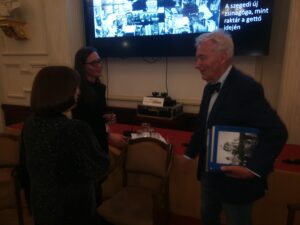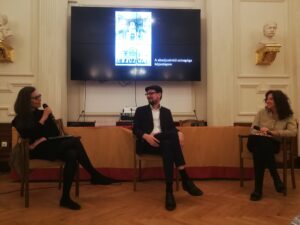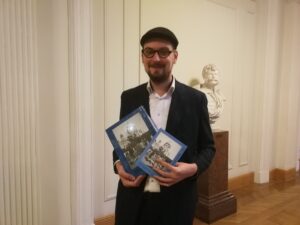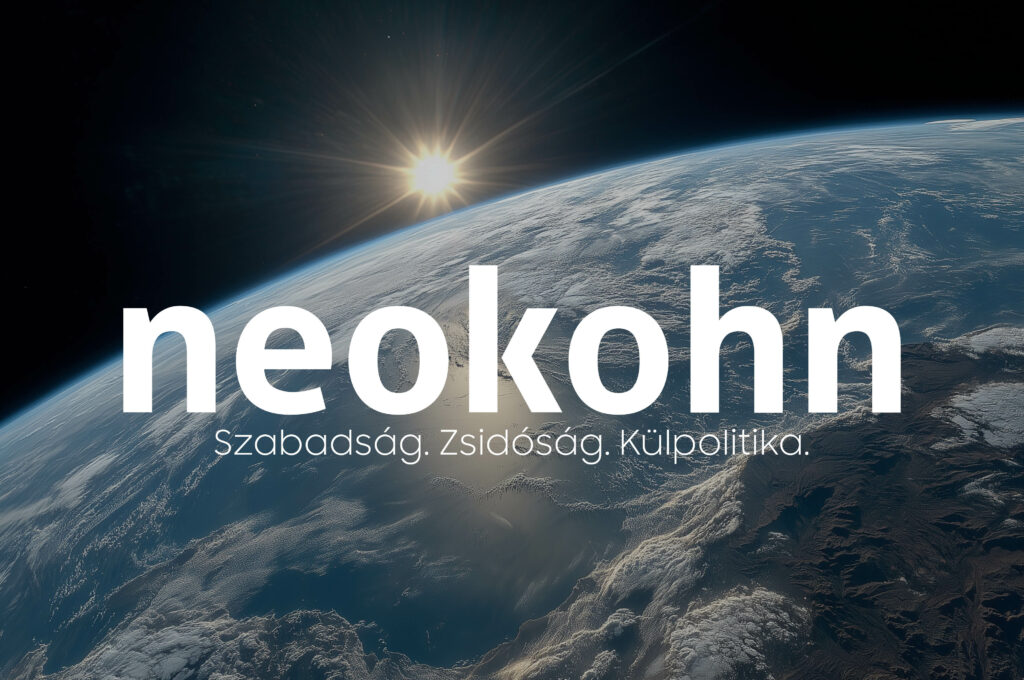A gala presentation of the book Jewish Heritage – Rural Jewish Religious Communities in Hungary was held at the Hungarian Academy of Sciences on Monday evening. The work of the young cultural historian Viktor Cseh may open a new chapter in the history of Hungarian sciences, the participants put forth in their discussion about the work.
„Today is a very important event for Hungarian culture.”
— said Szilveszter E. Vizy, the 84-year-old former president of the Hungarian Academy of Sciences (MTA), as to why he made sure to be at the event. The Széchenyi Prize-winning professor, who is also the president of the Christian-Jewish Society, believed that now is the time to complete a large-scale writing on the hitherto lesser-known stories of rural Jewry. The scientist also bought himself two copies of the work.

Before the discussion, Péter Kirschner, the president of Mazsike (Hungarian Jewish Cultural Association), greeted the audience, among whom it was refreshing to see so many young people.
Kirschner expressed his gratitude to the current management of the host, the Hungarian Academy of Sciences, which he said has supported their work as a continuous partner during its 33 years of operation.
Zsuzsa Toronyi, director of the Hungarian Jewish Museum and Archives, and Nóra Winkler, a journalist, talked with Viktor Cseh.
The writer originally wanted to write a guidebook of barely 100 pages, but from the decades-long material of ever-expanding scientific research, a large-scale work was published this summer and proclaimed to possibly be one of the cultural-historic sensations of the year.
The book, a visually exciting work weighing in at 2 kilograms in A-4 format, was shown in Tapolca a couple of weeks ago, but the current unveiling was its official premiere. (Mazsike is scheduled to hold book launches in several other rural cities in the coming weeks.)

The author’s 11-year-old trip to Eastern Hungary with a group of friends was followed by dozens of research visits to various parts of the country, where the young man systematically researched local characteristics, visited demolished or still-standing architectural heritage sites, and spoke to survivors and eyewitnesses. A significant part of the sources for his work was further provided by articles published in contemporary Jewish press.
Zsuzsa Toronyi noted that
The Czech mission unearthed one piece of research that their own organization has recently been able to rely on as a scientific resource.
The head of the Hungarian Jewish Museum and Archives added that one of the real peculiarities of the book is that it also processes many sites that were not previously part of the research into Jewish heritage. He sees the reason for this being the fact that religiously divided Jewish communities were not necessarily treated equally by the leaders of the Hungarian Jewish Museum and Archives before 1945 and later.
„Even some modest memories can be worth more to us than a Mona Lisa.”
— said Toronyi, who also pointed out that research into Hungarian Jewry may previously have been more selective because the decision-makers did not consider everything important for one reason or another. According to the expert, this is why it can be stated that the book of Czech Viktor
„is not just a good story, it’s a milestone in the history of scientific study.”

The director of the Jewish Museum believes that by making this book more widely available, the ethnography of Hungarian Jewry could be brought closer to the canon that is part of universal Hungarian culture, which, in his opinion, does not yet include the study of Jewish rural histories and customs.
Adding to this, Viktor Cseh said that in his experience, while the settlements in the western part of the country have more pertaining to tangible and architectural heritage, the eastern part of the country is a real ethnographic treasure trove with a lot of interesting stories.
In the volume Jewish Heritage – Rural Jewish Religious Communities in Hungary, the author presents the communities of 134 settlements, which have already started to systematize the stories of another 140 sites. Thus, it seems natural to continue this great work. And there would be plenty of ground to cover for this, as it was stated at the presentation that the experts know about more than 600 rural communities, which means that there are still many new areas to research.
A memorial plaque was inaugurated in Buda in honor of Wallenberg’s helpers – Neokohn
Wallenstein Róbert összes cikkét elolvashatja itt.




